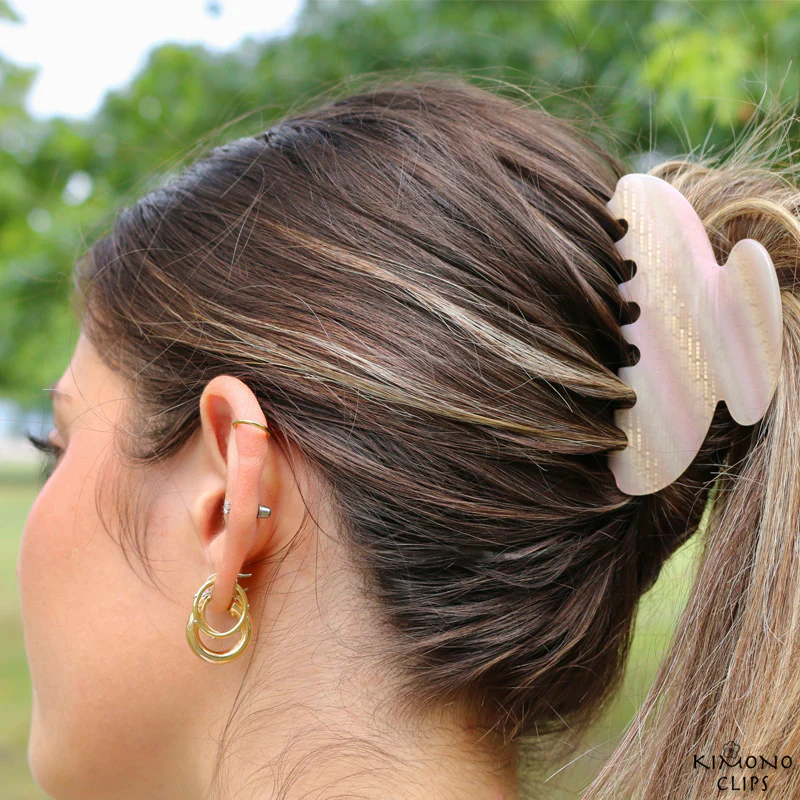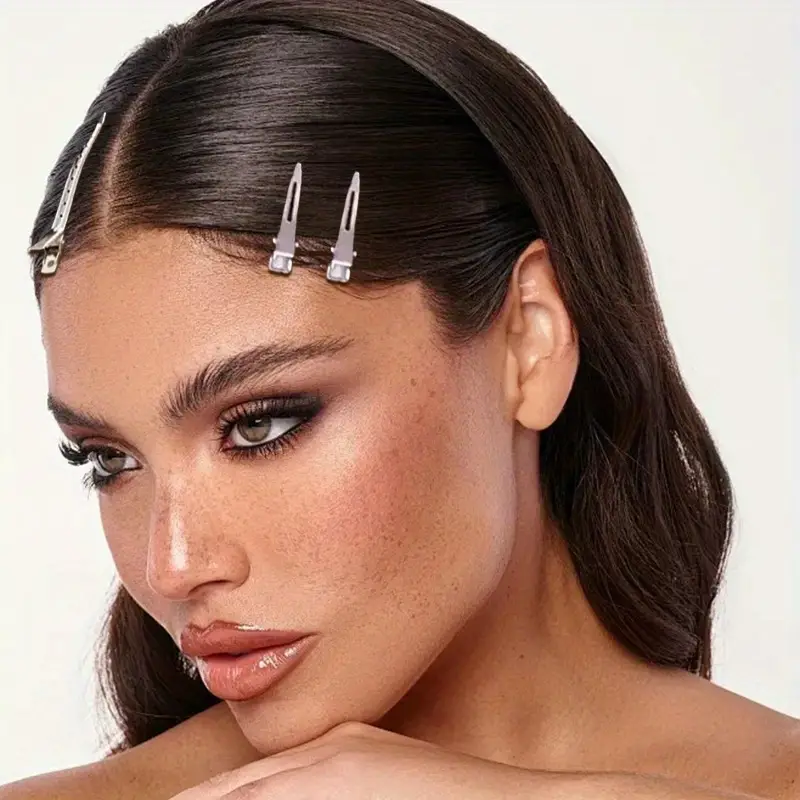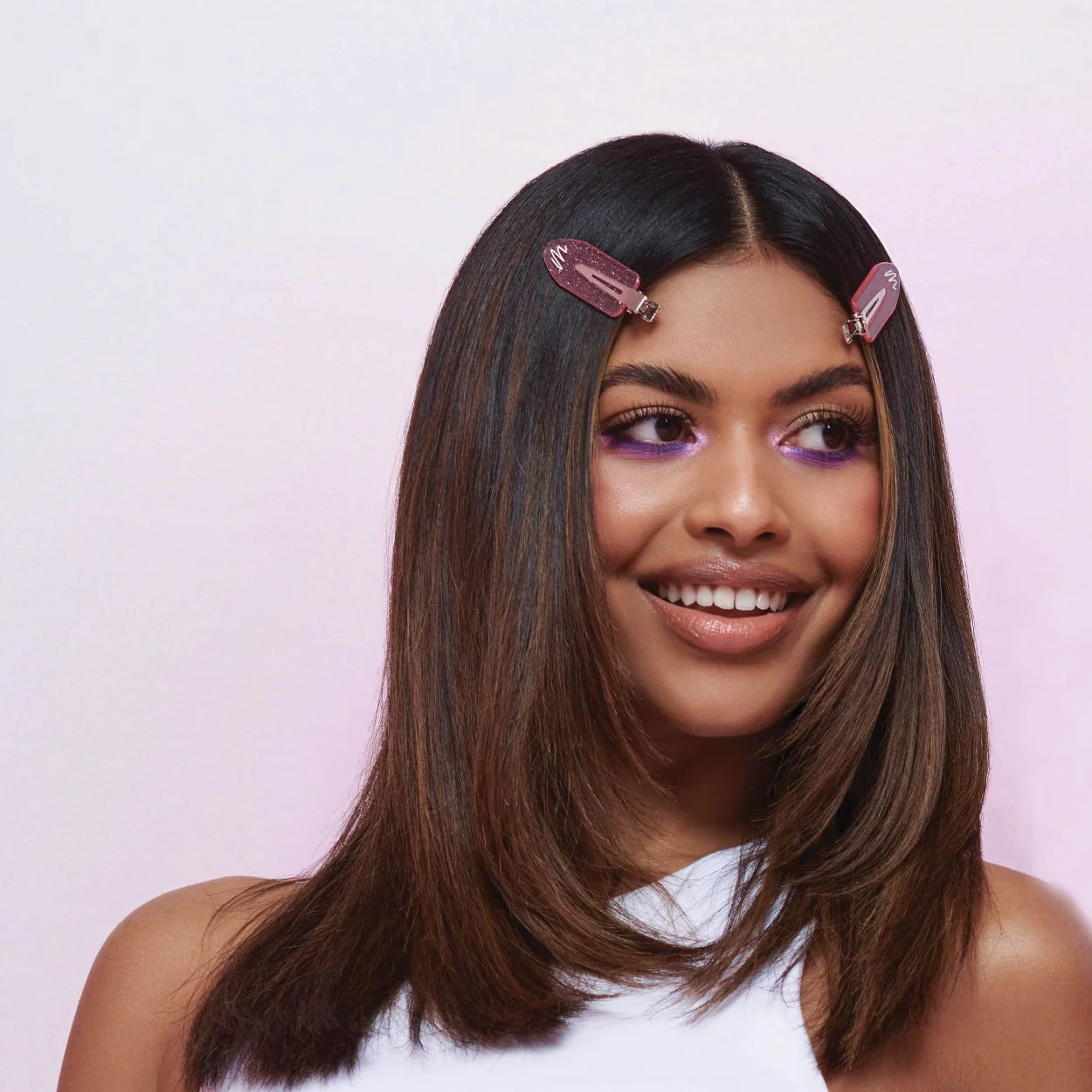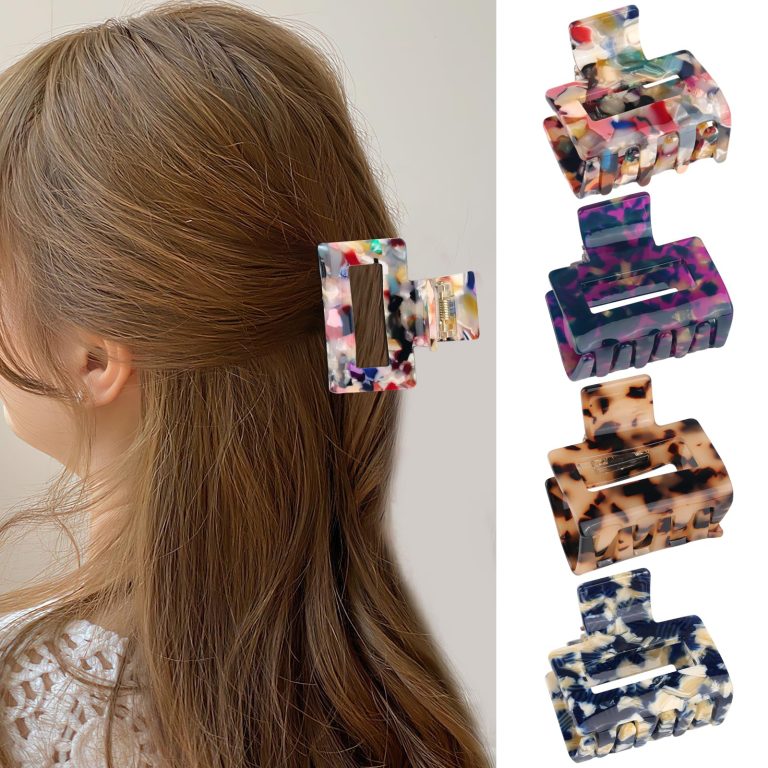
Hair Clips for Styling:The Ultimate Guide to Hair Clips
Introduction: The Versatility of Hair Clips
Hair clips have become an essential accessory in the world of hairstyling. These small but mighty tools offer endless possibilities for creating stunning looks. From casual everyday styles to elegant updos, hair clips provide both function and fashion. They come in various shapes, sizes, and materials, catering to different hair types and styling needs. Moreover, hair clips serve as practical solutions for managing unruly locks and adding a touch of personality to any hairstyle. This guide will explore the diverse world of hair clips, their uses, and how to incorporate them into your hair routine effectively. Whether you’re a hair styling novice or a seasoned pro, understanding the potential of hair clips will elevate your hair game to new heights.

Types of Hair Clips: Finding Your Perfect Match
The market offers a wide array of hair clips, each designed for specific purposes and hair types. Firstly, bobby pins remain a classic choice for securing small sections of hair or creating intricate styles. Secondly, alligator clips provide a strong hold for thicker hair and work well for sectioning during styling. Thirdly, snap clips offer a secure grip and come in various sizes, making them suitable for different hair textures.
Additionally, butterfly clips, popular in the 90s, have made a comeback as both functional tools and fashion statements. For those seeking an elegant touch, decorative barrettes and hair slides add sophistication to any look. Claw clips, on the other hand, excel at creating quick updos and managing long, thick hair. Lastly, mini claw clips and sectioning clips prove invaluable for precision styling and maintaining sections during complex hairstyles. Understanding the strengths of each type allows for more effective and creative styling options.
Choosing the Right Hair Clip: Factors to Consider
Selecting the appropriate hair clip involves considering several factors. First and foremost, hair type plays a crucial role in determining the most suitable clip. Fine hair benefits from lightweight clips that won’t weigh it down, while thicker hair requires sturdier options for a secure hold. Secondly, the intended hairstyle influences clip choice. Updos may require stronger clips, whereas loose styles can use decorative options.
Additionally, the occasion matters; everyday looks call for practical clips, while special events warrant more ornate choices. Material also affects performance; plastic clips offer affordability and variety, metal clips provide durability, and wooden clips add a natural touch. Furthermore, clip size should match the amount of hair being styled. Comfort remains essential, especially for clips worn for extended periods. Lastly, personal style should guide selection, as hair clips can serve as fashionable accessories. By weighing these factors, finding the perfect hair clip for any situation becomes achievable.

Styling Techniques: Mastering the Art of Hair Clip Usage
Mastering hair clip techniques opens up a world of styling possibilities. To begin, sectioning hair with clips creates a foundation for complex styles. Next, using clips to hold curls in place while cooling enhances longevity and definition. For quick styles, twisting sections of hair and securing with decorative clips adds instant flair. Moreover, layering multiple small clips creates texture and interest in otherwise simple hairstyles.
When dealing with bangs, clips can train hair to lay flat or sweep to the side. For updos, strategically placed clips secure loose ends and add structure. Braiding techniques benefit from clips to hold sections in place during the process. Additionally, clips excel at creating volume at the crown by holding lifted sections of hair. For those growing out layers, clips disguise awkward lengths while adding style. Lastly, using clips to create faux bobs or shorter looks allows for versatility without commitment. With practice, these techniques become second nature, expanding styling options significantly.
Trendy Hairstyles: Incorporating Clips for Modern Looks
Current hair trends embrace the versatility of clips, offering fresh ways to incorporate these accessories. The half-up, half-down style gains polish with strategically placed decorative clips. Additionally, the sleek, pulled-back look benefits from hidden clips for a seamless appearance. For a bohemian vibe, scattered small clips throughout loose waves create a whimsical effect. The resurgence of 90s fashion brings back butterfly clips, now used in modern, minimalist arrangements. Furthermore, the messy bun evolves with the addition of eye-catching clips, adding structure to the seemingly effortless style.
Braided looks incorporate clips as both functional tools and decorative elements. The side-swept style gains hold and glamour with a statement clip. For shorter hair, using multiple small clips creates texture and interest. The low ponytail receives an upgrade with a clip positioned at the base, concealing hair ties. Lastly, the top knot benefits from surrounding decorative clips, transforming it into a more formal style. These trends demonstrate how hair clips continue to evolve, offering endless possibilities for modern hairstyling.

Hair Clip Care and Maintenance: Ensuring Longevity
Proper care and maintenance of hair clips ensure their longevity and consistent performance. Firstly, regular cleaning removes product buildup and debris. Soaking clips in warm, soapy water and gently scrubbing with a soft brush effectively cleanses most types. For metal clips, drying thoroughly prevents rust. Secondly, proper storage prevents damage and loss. Using a designated container or organizer keeps clips sorted and protected. Additionally, avoiding excessive force when opening or closing clips preserves their mechanisms.
For clips with embellishments, careful handling prevents loosening or loss of decorative elements. Moreover, rotating clip usage prevents overreliance on a single piece, extending the life of the entire collection. When traveling, storing clips in a protective case prevents bending or breaking. For hair clips with hinges, occasional oiling maintains smooth operation. Furthermore, removing clips carefully from hair prevents both clip damage and hair breakage. Lastly, investing in quality clips initially often results in better longevity. By following these maintenance tips, hair clips remain functional and attractive for extended periods.
DIY Hair Clips: Adding a Personal Touch
Creating custom hair clips offers a unique way to express personal style. To start, gather supplies such as plain clips, decorative elements, and strong adhesive. Firstly, painting plain clips with nail polish or enamel paint provides a custom color base. Next, adding small embellishments like rhinestones, pearls, or miniature flowers creates eye-catching designs. For a natural look, wrapping clips in twine or thin leather cord adds texture. Additionally, using polymer clay to mold custom shapes onto clips results in truly one-of-a-kind pieces. Fabric-covered clips coordinate perfectly with outfits; simply cut fabric to size, apply adhesive, and wrap carefully.
Moreover, repurposing old jewelry pieces onto clips breathes new life into forgotten accessories. For a bohemian touch, attaching small feathers or dreamcatcher-inspired elements works beautifully. Using resin to embed small objects or create abstract designs offers endless creative possibilities. Lastly, personalizing clips with initials or meaningful symbols adds sentimental value. These DIY projects not only result in unique accessories but also provide a satisfying creative outlet.

Hair Clips for Different Hair Types: Finding the Perfect Fit
Different hair types require specific considerations when choosing and using hair clips. For fine hair, lightweight clips with gentle grips prevent slipping without causing breakage. Texture sprays can increase grip for stubbornly smooth strands. Thick hair benefits from sturdy clips with strong springs or clamps to securely hold substantial sections. Sectioning thick hair before styling with clips manages volume effectively. Curly hair requires clips that won’t disrupt curl patterns; wide-tooth clips or fabric-covered options work well.
Additionally, using clips to “plop” curly hair enhances definition. For coily hair, large clips help manage sections during styling or stretching processes. Oily hair benefits from clips that don’t sit flat against the scalp, preventing product transfer. Dry or damaged hair requires gentle clips, preferably with smooth surfaces to prevent snagging. For color-treated hair, using coated clips prevents unwanted color transfer. Lastly, clips for long hair should be durable enough to hold weight without slipping. By matching clip types to specific hair needs, styling becomes more effective and enjoyable for all hair types.
Conclusion: Embracing the Versatility of Hair Clips
Hair clips have proven themselves as indispensable tools in the world of hairstyling. Their versatility allows for countless creative expressions, from practical everyday styles to glamorous evening looks. By understanding the various types of clips available and mastering different styling techniques, anyone can elevate their hair game significantly. Moreover, the ability to customize and care for hair clips ensures that these accessories remain both functional and fashionable for years to come.
Whether following celebrity trends, creating unique DIY pieces, or finding the perfect clip for specific hair types, the possibilities are truly endless. As fashion continues to evolve, hair clips adapt and reinvent themselves, remaining relevant and exciting. Embracing the potential of hair clips opens up a world of styling options, allowing for personal expression and creativity in daily life. With this comprehensive guide, navigating the diverse landscape of hair clips becomes an enjoyable journey of discovery and style innovation.

